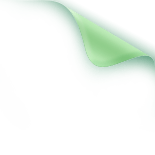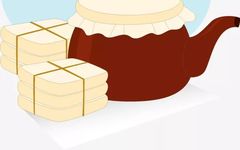The Method and Efficacy of Decoction Administration
The method of taking traditional Chinese medicine (TCM) decoctions significantly affects their efficacy. The famous physician of the Qing Dynasty, Chen Xiuyuan, stated: “The recovery from illness is not only dependent on the prescription but also on the method of administration; improper administration not only fails to work but can also be harmful, which should not be overlooked.” Therefore, pharmacists in TCM should guide patients to master the correct methods of taking decoctions to fully utilize their effects.


Timing of Decoction Administration for Different Types of Diseases
Generally speaking, decoctions for chronic and stubborn diseases should be taken before meals to allow the medicinal properties to accumulate in the abdomen and gradually take effect; digestive and appetite-enhancing herbs should be taken half an hour before meals; decoctions for diseases located below the diaphragm, such as those affecting the stomach, liver, and kidneys, should also be taken before meals; antacids should be taken before meals to reduce gastric acid secretion and enhance protection of the gastric mucosa. For decoctions that are highly irritating to the gastrointestinal tract, such as those for breaking blood stasis and promoting circulation, as well as for diseases above the diaphragm, such as dizziness, headaches, eye diseases, and throat pain, they should be taken after meals. Laxatives should be taken on an empty stomach to allow direct action on the intestines for effective bowel movement; tonifying herbs should be taken on an empty stomach in the morning or half an hour before bed; antiparasitic medications are more effective when taken on an empty stomach. Decoctions for treating cold-damp diseases, such as Jiming San (Chickens’ Cry Powder), should be taken before dawn; emetic decoctions like Changshan Yin (Arisaema Decoction), Qibao Yin (Seven Treasures Decoction), and Jiemu Yin (Malaria Stopping Decoction) should be taken in the morning. Any prescriptions that rely on the body’s Yang Qi to expel pathogens, such as those that tonify Yang and Qi, warm the middle and dispel cold, or promote urination, should be taken when Yang Qi is rising during the day, taking advantage of the natural increase in Yang energy to enhance the efficacy of Yang-tonifying and ascending herbs; diaphoretic and Qi-boosting herbs should also be taken before noon, as this aligns with the upward movement of Yang Qi, facilitating their effects. Conversely, prescriptions that rely on Yin Qi to expel pathogens, such as those that nourish Yin and blood, astringe and consolidate, calm the spirit, settle fright, and clear heat and detoxify, should be taken in the afternoon or evening when Yin Qi is increasing. Calming herbs should be taken before bed. Some medications need to be taken before the onset of symptoms, such as bronchodilators which should be taken 2 hours before an attack, and antimalarial medications which should be administered 3-5 hours before an episode.


Temperature of Decoction Administration
Generally, decoctions should be taken warm. However, decoctions for stopping bleeding, astringing, clearing heat and detoxifying, and dispelling summer heat should be taken cold. This is because detoxifying agents, when taken hot, can increase the release of toxins, hence they should be taken cold; cold medicines for heat conditions should also be taken cold; for true cold and false heat conditions, hot medicines should be taken cold; and astringent and hemostatic agents should be taken cold. On the other hand, decoctions that regulate Qi, invigorate blood, resolve stasis, and release the exterior should be taken hot. Spicy and warming exterior-releasing herbs should be taken hot to enhance their dispersing properties, and after taking, one should cover warmly to induce sweating; hot medicines should be taken for cold conditions; for true heat and false cold conditions, cold medicines should be taken hot; Qi-regulating herbs should be taken hot as heat facilitates their action, while cold can lead to stagnation; thus, blood-invigorating and blood-tonifying herbs should also be taken hot.


Frequency of Decoction Administration
In terms of frequency, the total daily dosage of the medicine is generally divided into several doses. This method helps maintain a certain concentration of the medicine in the body, allowing for sustained efficacy and therapeutic effect. Depending on the patient’s condition, the frequency can be divided into 2 times/day, 3 times/day, or 3 times during the day and once at night. In cases of acute and critical conditions where the vital Qi is not yet deficient, a single large dose may be administered, which allows for rapid action; however, this method should be used cautiously in elderly or frail patients. For upper respiratory diseases, especially throat ailments and vomiting patients, frequent dosing is often employed, where the daily dosage is taken in smaller amounts multiple times; there is also a method of taking large doses multiple times within a short period, aimed at achieving a high concentration of the medicine in the body quickly to enhance its efficacy. Ancient physicians placed great importance on the frequency of administration; Xu Lingtai from the Qing Dynasty once stated, “Even if the prescription is correct, if the method of administration is not proper, it will not only be ineffective but can also be harmful,” highlighting the importance of correct dosing frequency for improving the diagnostic and treatment capabilities of modern healthcare professionals.

Dosage of Decoction Administration
The dosage is also an important aspect of the method of administration. Dosage refers to the amount of medicine, including daily dosage and single dosage. The size of the dosage taken by the patient relates to the efficacy or side effects of the medicine. A dosage that is too small may be ineffective, while a dosage that is too large may lead to toxic side effects. Currently, the most commonly used dosage for adults is approximately 100-150ml per dose, taken twice daily; for children, the dosage is generally 50-75ml per dose, taken twice daily, with adjustments for infants. For children, it is advisable to use gentle heat to concentrate the decoction and administer it in small amounts multiple times, avoiding rapid administration to prevent choking; critically ill patients should follow medical advice for dosing.


The above content is excerpted from the national higher education textbook “Introduction to Clinical Pharmacy of Traditional Chinese Medicine”. We welcome valuable feedback and suggestions from TCM colleges during its use.

